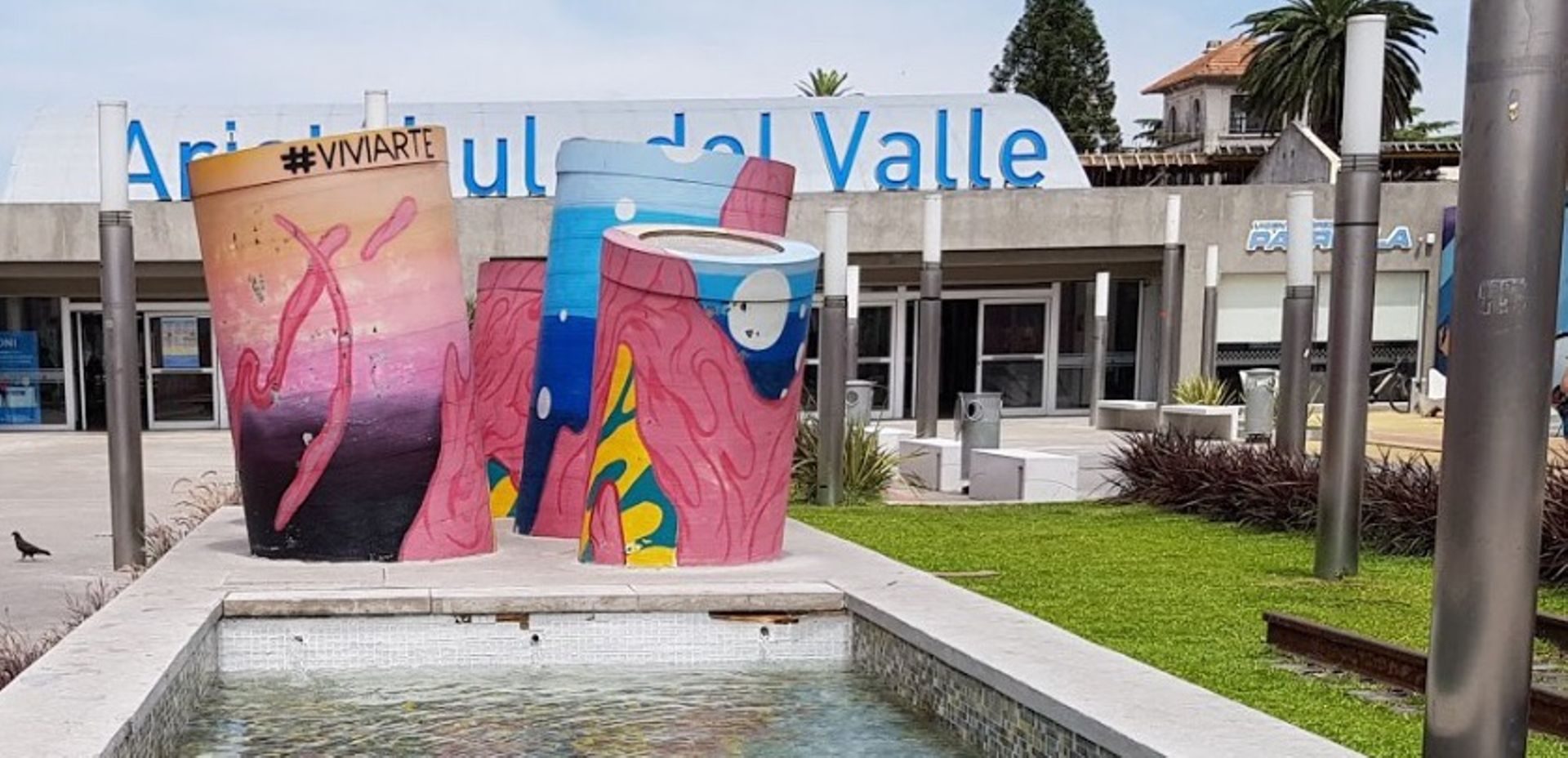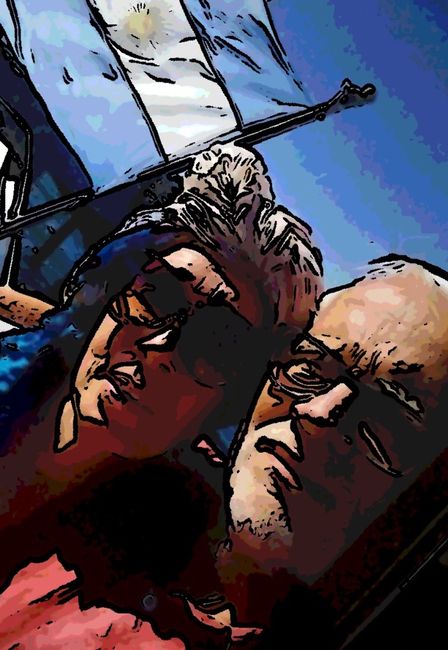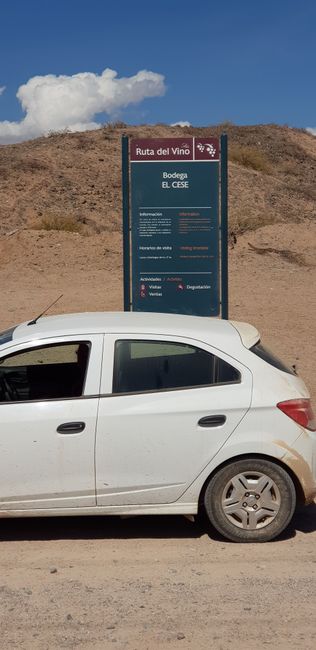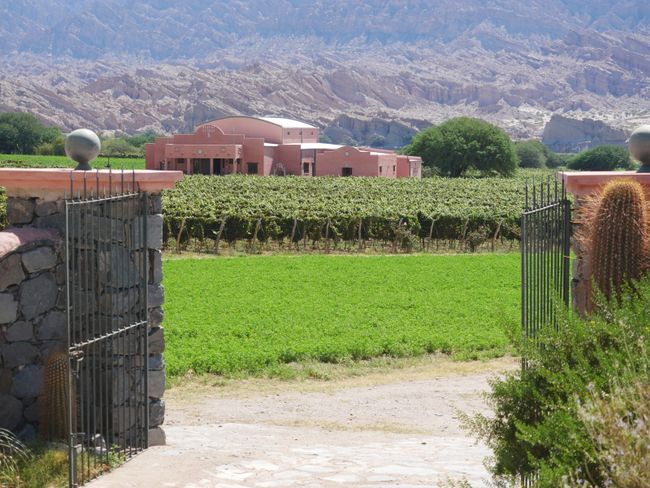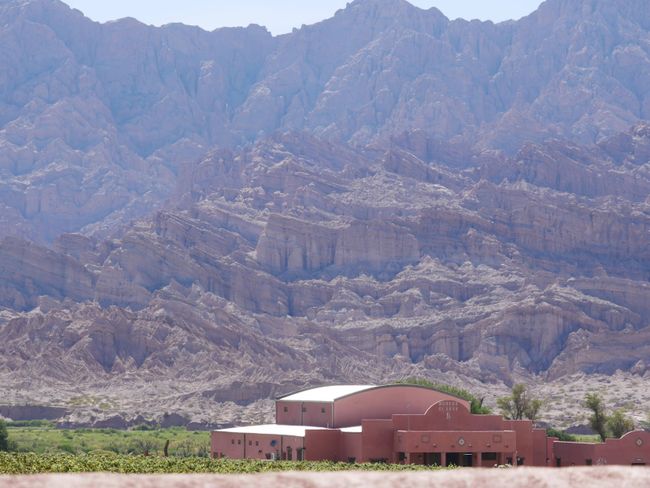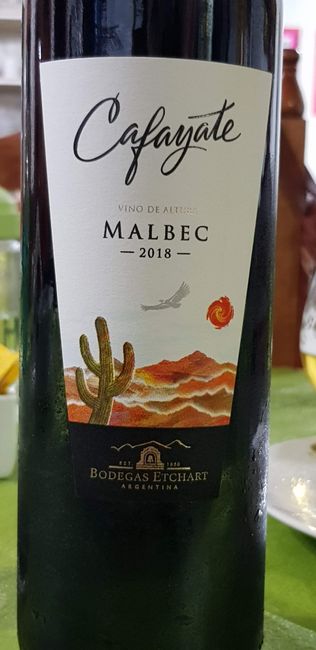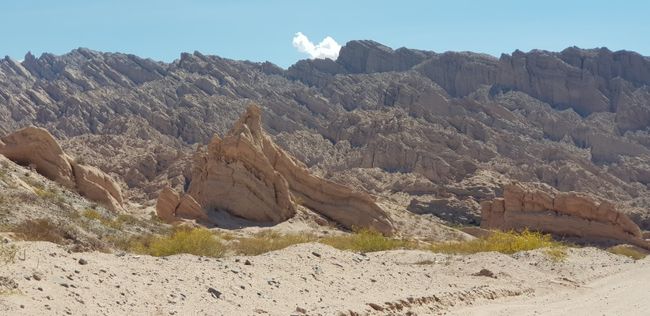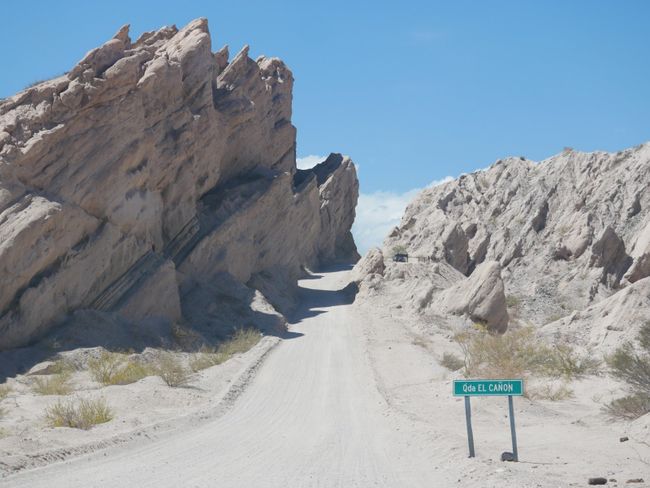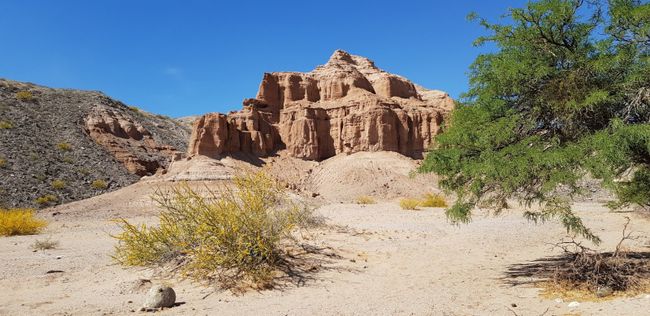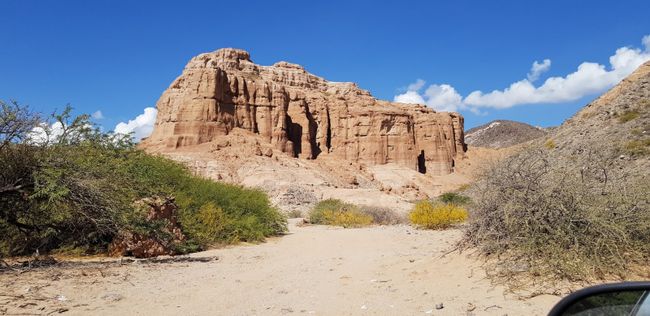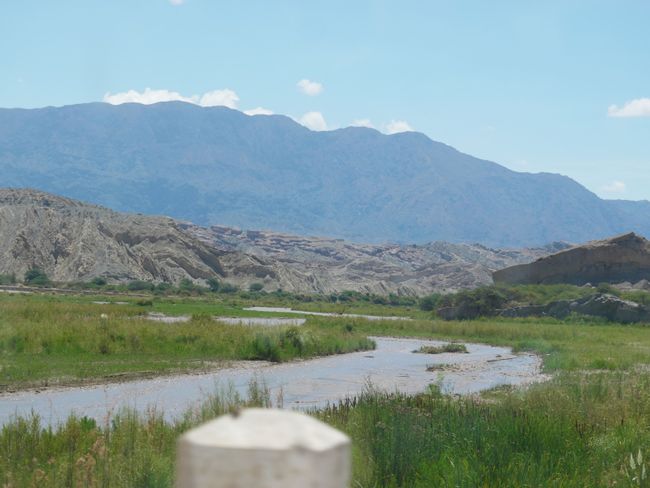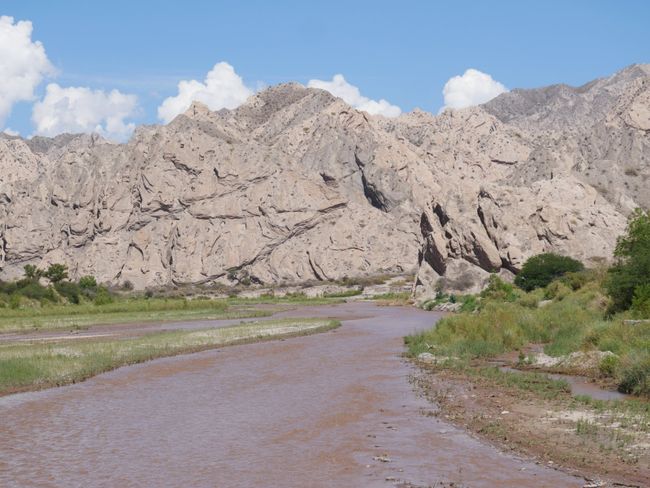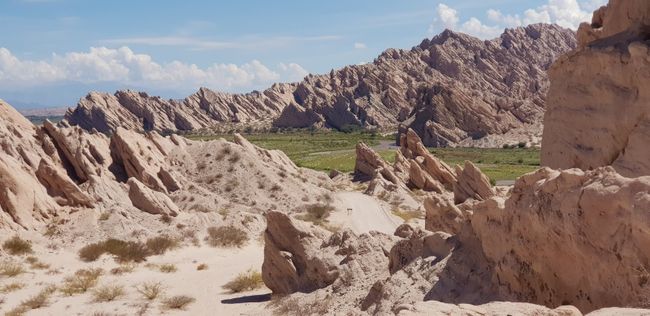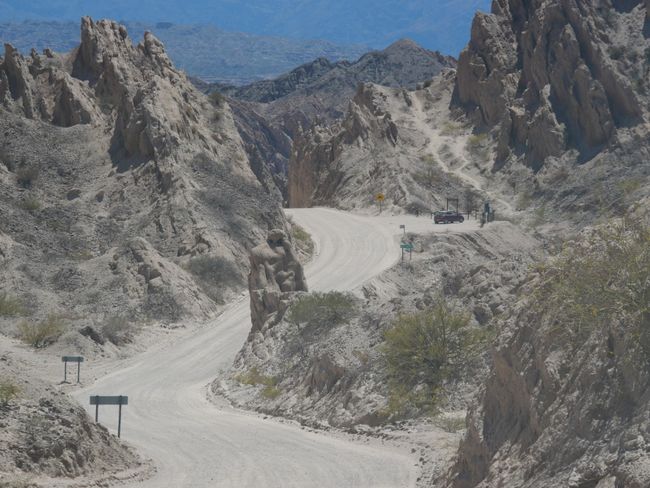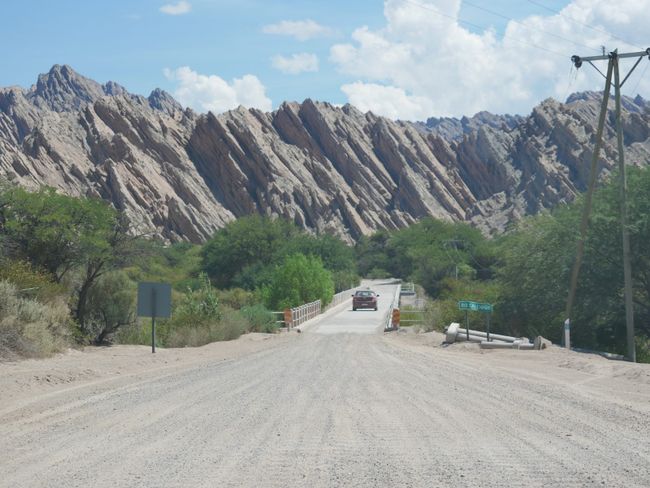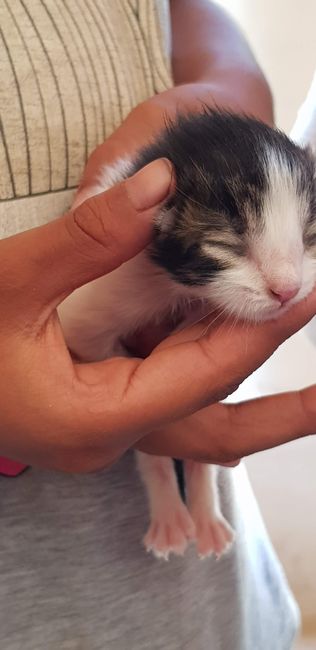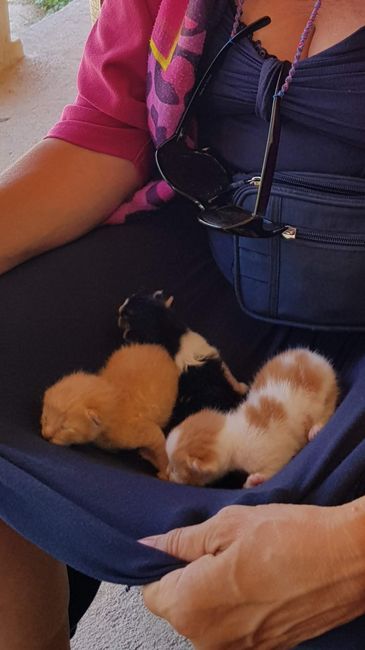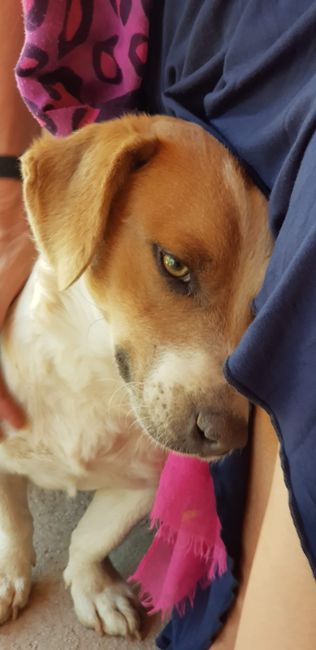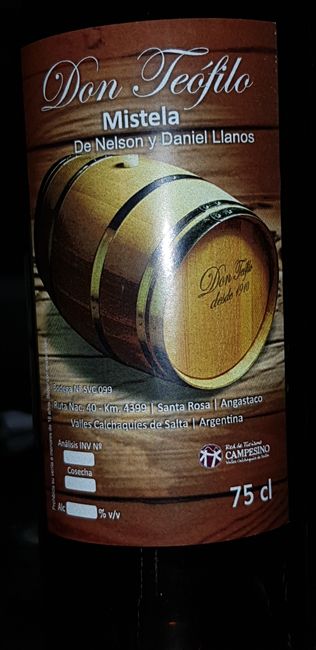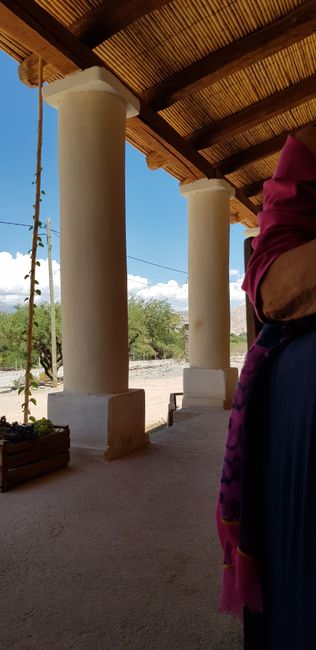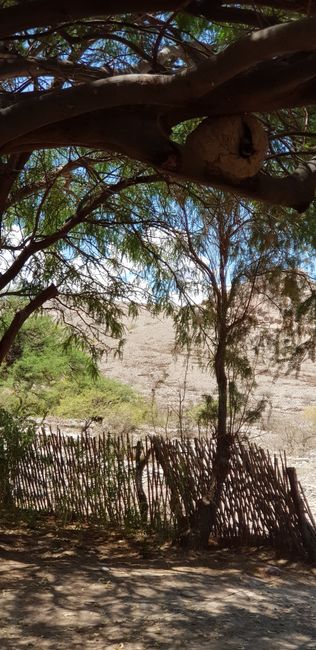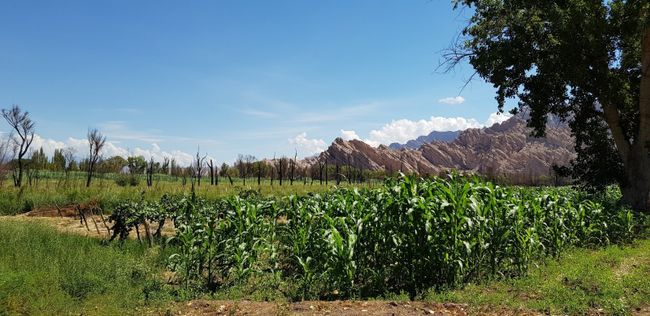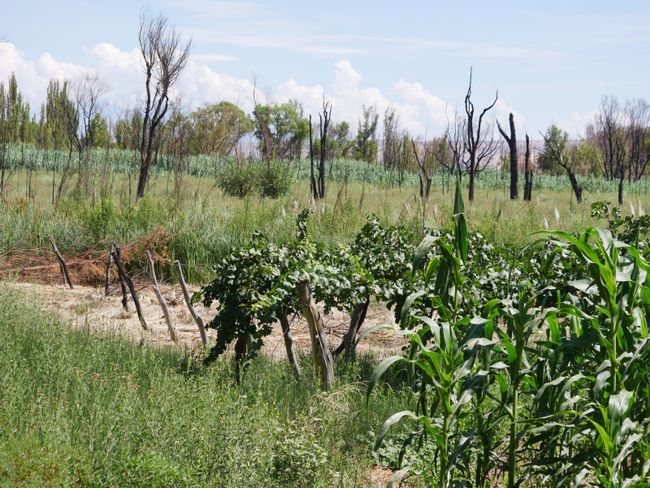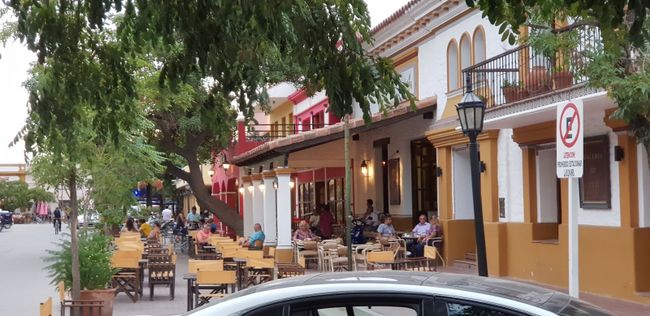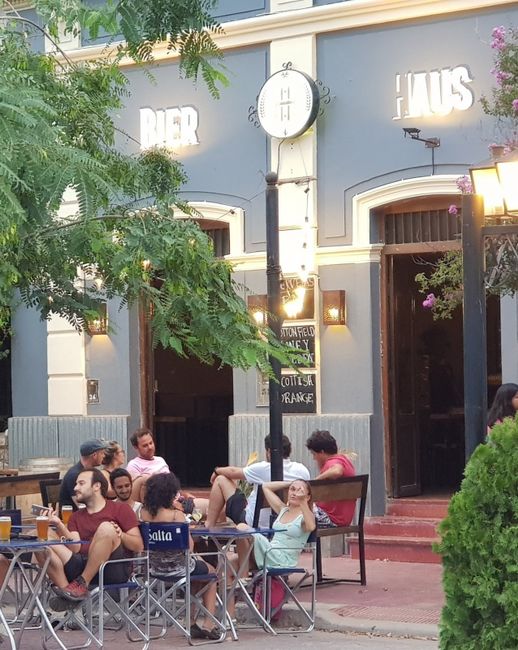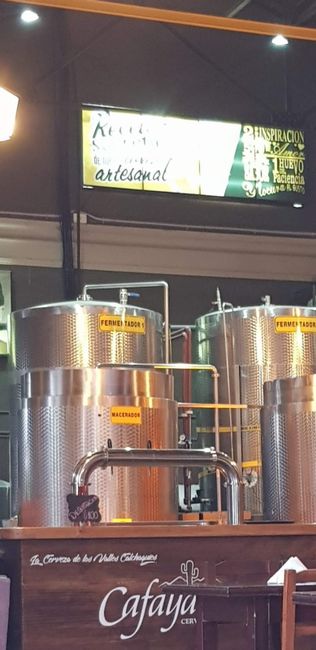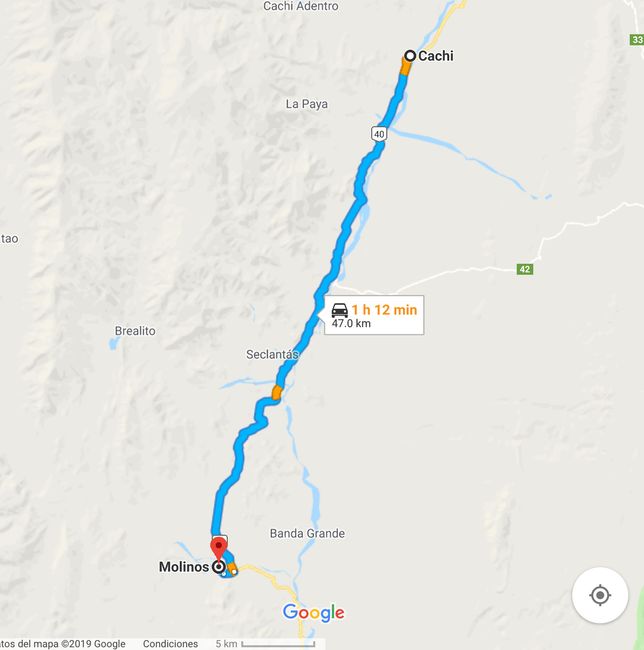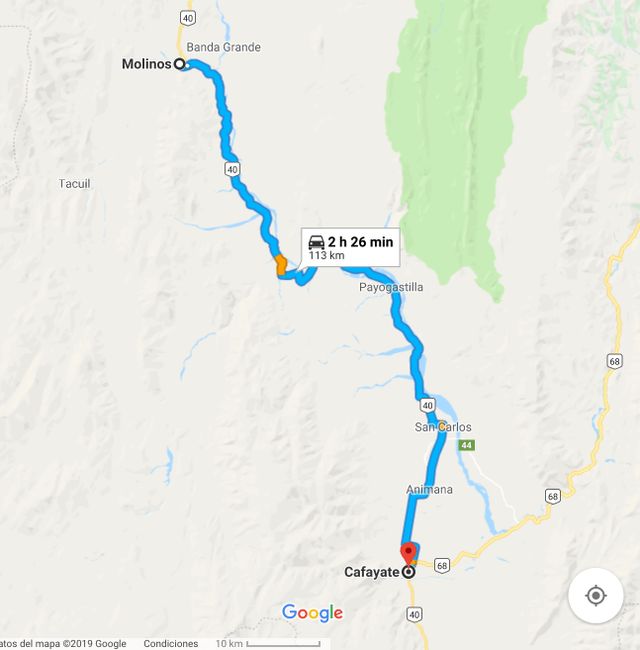Wine Route
ที่ตีพิมพ์: 02.02.2019
สมัครรับจดหมายข่าว
The next morning we made another attempt to reach 'Abra de Acay' or at least 'Puente del Diablo' (according to Google, about 40 km and 50 min away) via Ruta 40, this time from the south. Norbert and our Chevy bravely fought their way through approximately 30 km of muddy and rocky fields, along with treacherously steep, narrow, and difficult turns, with the mountain on one side and the abyss on the other. Unfortunately, we had to give up shortly before reaching our destination. Ahead of us, in a curve, was a road covered in at least 100 meters of red clay-like mud, interrupted by several fast-flowing streams. Luckily, the road was wide enough for us to turn around safely, as there was hardly any oncoming traffic. It's a pity we didn't take any pictures of this tour.
We stopped in Cachi again for a light lunch and a visit to the Archaeological Museum. Then we continued south on Ruta 40, which is designated as part of the 'Ruta del Vino' (Wine Route) here, although its poor condition doesn't match that title. Away from the road, which leads through truly spectacular rock formations (or rather, a gravel road), we admired the extensive vineyards along the Río Calchaquí valley, interrupted by sugarcane plantations, grazing areas, and groves of trees. Unfortunately, most of these fertile lands seem to be owned by a few large landowners. We frequently drove past impressive wineries that offered tours, tastings, and even accommodations.
However, there are still a few small winegrowers left. We took a break at one of them. In addition to the beer and water he sold us, he also served us delicious bites of goat cheese brought to him by his 'neighbor' (who lives 1500 meters up the mountain). His two daughters proudly showed us the tiny kittens they had borrowed from a mother cat.
His fields are located on the opposite side of the road. Although they are on the side of the river, he does not directly irrigate his fields from the Río Calchaquí; instead, he uses channels that bring water from the mountains.
We spent the next night in Molinos, a 1000-resident village off RN 40. The village seems to be a popular stop on the wine route. There is an old manor house that has been converted into an (expensive) hotel, but you can also have excellent and comparatively inexpensive meals there.
We continue the next day, still on the terrible gravel road called Ruta Nacional. Norbert is getting tired of it.
Cafayate, our last stop on the wine route, is also the center of wine production in this area. The small town with just under 15,000 inhabitants is 100% focused on (wine) tourism, which is reflected in the prices. We paid twice as much for our hostel (which was really good, especially the breakfast) as in Molinos or even in Salta. Located at an altitude of 1700 meters, the town has a fantastic climate, almost always sunny, with summers that are very warm but not as unbearable and oppressive as in Buenos Aires, and mild winters with only occasional freezing nights. .
The town is surrounded by vineyards as far as the eye can see, and we frequently pass impressive estates and wineries that invite visitors to tastings, tours, and often, accommodations with large signs by the roadside.
We continue the journey.
สมัครรับจดหมายข่าว
คำตอบ
